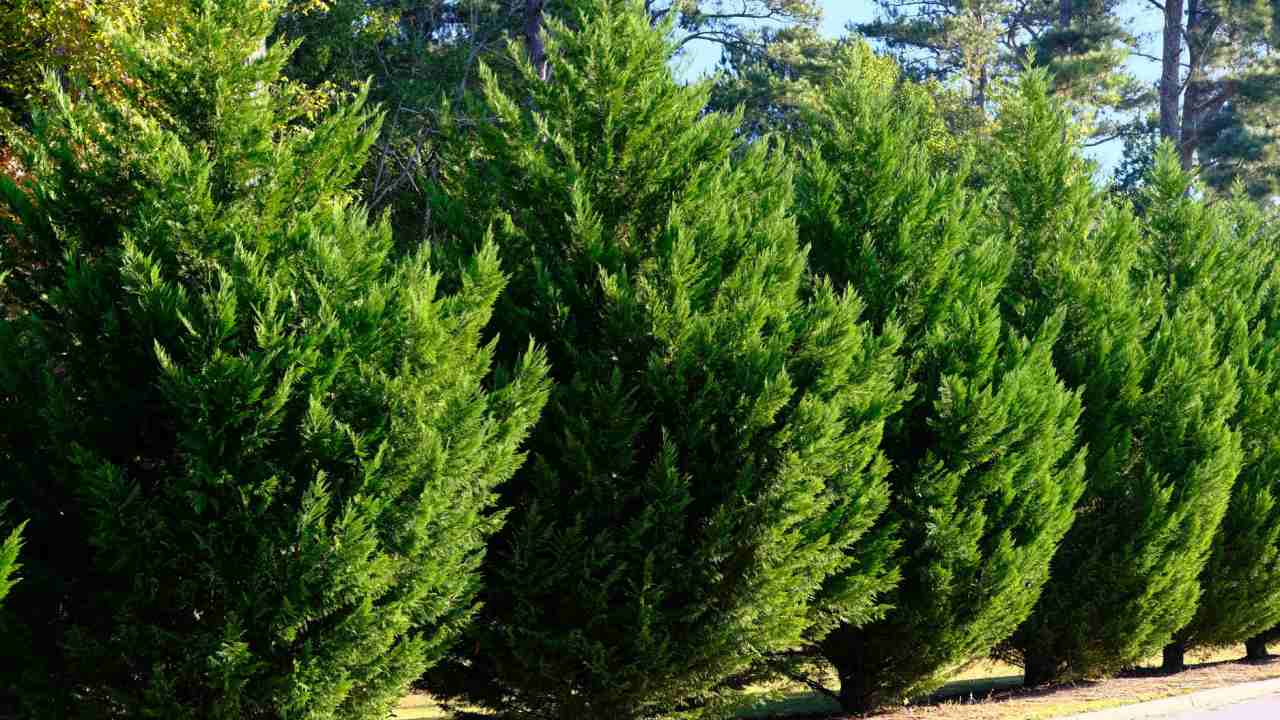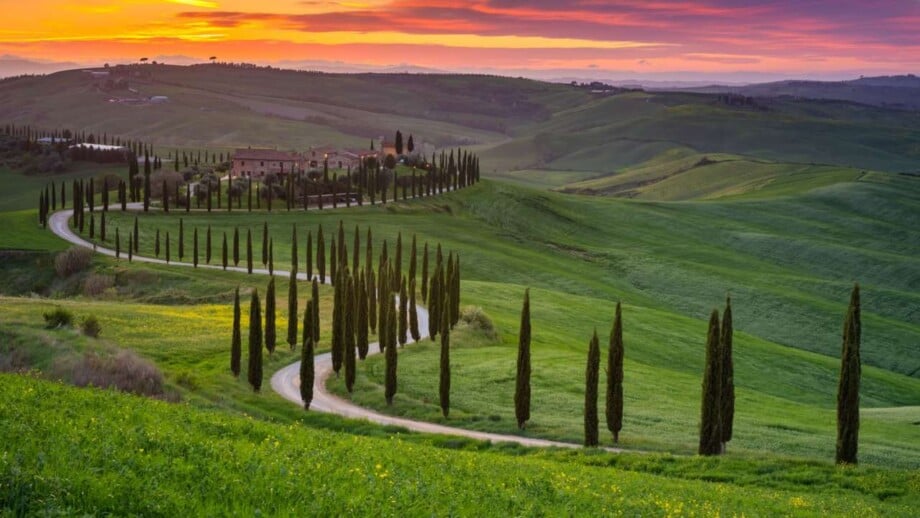Cypress trees have long captivated the hearts of nature enthusiasts and gardeners alike. With their majestic presence and unique characteristics, these trees never fail to leave a lasting impression.
These trees have a remarkable history that dates back millions of years. Fossil records indicate that cypress trees have been thriving on Earth for over 65 million years, making them one of the oldest tree species on the planet.
When it comes to longevity, cypress trees are renowned champions. Some species, such as the bald cypress (Taxodium distichum), have been known to live for thousands of years. It’s awe-inspiring to think about the stories these ancient trees could tell if they could speak!
Plus, cypress trees create vital ecosystems that support diverse plant and animal life. They provide shelter and nesting sites for numerous bird species, including owls, hawks, and herons. Additionally, the swampy areas where some cypress trees thrive serve as critical habitats for amphibians, reptiles, and various aquatic creatures.
In this comprehensive guide, I’ll go over everything you need to know about cypress trees, including the most common types of cypress trees.
What are Cypress Trees?
Before we dive into the intricacies of various cypress tree species, it is important to understand the basics.
Cypress trees belong to the genus Cupressus of the family Cupressaceae, a group of coniferous evergreens renowned for their timeless beauty. With over 20 species and numerous cultivars, cypress trees showcase an incredible diversity that is worth exploring.
The Cupressus genus encompasses a wide range of trees, from towering giants to compact shrubs. These trees are commonly found in temperate regions, particularly in the Northern Hemisphere, where they thrive in diverse habitats, including forests, swamps, and even arid landscapes.
Known for their durability, cypress trees have adapted to various environmental conditions, making them exceptionally versatile. The extensive cultivation of cypress trees has led to a variety of shapes, sizes, and colors, similar to that of most conifers.
The majority of cypress species are grown for their durable timber, while others are used as ornamental trees and plants in parks, gardens, and around temples.
One of the most remarkable features of cypress trees is their longevity. Some species, such as the Mediterranean cypress (Cupressus sempervirens), have been known to live for thousands of years. These ancient trees have witnessed the rise and fall of civilizations, standing as silent witnesses to the passage of time.
Another interesting aspect of cypress trees is their distinctive appearance. With their tall, slender trunks and feathery foliage, they create a unique silhouette against the sky. The branches of cypress trees often grow in a spiral pattern, adding to their visual appeal.
It’s important to note that the term ‘cypress’ is occasionally used to refer to other aromatic evergreen trees like cypress pine and false cypress. It’s also used for species of fustic and for bald cypress. Interestingly, in eastern Canada, it often refers to jack pine.
The Importance of Cypress Trees
Cypress trees are not just visually striking, they also play a crucial role in the ecosystem. These trees provide habitat and food for a variety of wildlife, including birds, insects, and mammals. The dense foliage of cypress trees offers shelter and nesting sites, while their seeds and cones serve as a source of sustenance for many creatures, including wild turkey, wood ducks, evening grosbeak, and squirrels.
Catfish spawn in the hollow trunks of cypress trees that are submerged in swamps, while toads, frogs, and salamanders breed in the bald cypress swamps.
Many different bird species also take shelter in the dense foliage. Interestingly, bald eagles nest in the treetops of cypress trees. Plus, deers and rodents also eat cypress seedlings.
In addition to their ecological importance, cypress trees have been valued by humans for centuries. The wood of certain cypress species, such as the bald cypress (Taxodium distichum), is highly prized for its durability and resistance to decay. It has been used in the construction of boats, furniture, and even ancient Egyptian coffins.
Moreover, cypress trees have cultural significance in many societies around the world. In ancient Greek mythology, the cypress was associated with mourning and was often planted in cemeteries. In China, cypress trees are considered symbols of longevity and are planted near temples and ancestral graves.
Different Types of Cypress Trees
1. Bald Cypress

This cypress tree variety is native to Florida, loves swamps, and can grow up to 70 feet tall! It grows throughout the southeastern United States and is one of the several species of cypress that prefers to grow in flood plains and swampy areas.
One of the most fascinating aspects of bald cypress trees is their ability to grow in wetland areas. These trees have developed unique adaptations that allow them to thrive in environments with high water levels.
Their roots are equipped with specialized structures called pneumatophores, which protrude from the ground and help the tree obtain oxygen in waterlogged soils. This remarkable adaptation enables bald cypress trees to survive and flourish in areas where other tree species would struggle.
Another remarkable feature of bald cypress trees is their longevity. These trees have been known to live for hundreds, and in some cases, thousands of years. In fact, some of the oldest living organisms on Earth are bald cypress trees. Their ability to withstand the test of time is a testament to their resilience and adaptability.
2. Chinese Weeping Cypress

The Chinese weeping cypress, also known as Cupressus funebris, is a truly remarkable tree that has captivated people’s hearts for centuries. Its graceful and elegant appearance sets it apart from other trees, making it a popular choice for landscaping and garden design.
Native to China, the Chinese weeping cypress holds immense cultural significance in the country’s history and traditions. It is often planted in temple gardens, where its presence symbolizes longevity, resilience, and a connection to the divine. The tree’s cascading branches, which sweep the ground in a mesmerizing display, create a sense of tranquility and enchantment, inviting visitors to immerse themselves in its beauty.
3. Californian Cypress (Gowen Cypress)

The Californian cypress, also known as Gowen cypress (Cupressus goveniana), is an endemic tree found only in California’s coastal areas. Its charming blue-gray foliage and unique cone shape make it a favorite among gardeners and landscape designers. Despite its limited range, this species is a true gem that deserves recognition.
Hailing from the Cuyamaca Mountains of Southern California, the Cuyamaca cypress (Hesperocyparis stephensonii) is a rare and distinctive tree. Known for its scaly, reddish-brown bark and vibrant green foliage, this species adds a touch of beauty to its native habitat.
As an endangered species, the Cuyamaca cypress deserves our attention and conservation efforts to ensure its survival.
4. Lemon Cypress

While most cypress trees feature shades of green or blue, the lemon cypress (Cupressus macrocarpa) steals the spotlight with its vibrant yellow foliage.
This cultivar adds a refreshing burst of color to gardens, making it a popular choice for those seeking a unique and eye-catching centerpiece. The lemon cypress’ citrusy aroma further enhances its appeal.
5. Mediterranean Cypress

No discussion about cypress trees would be complete without mentioning the Mediterranean cypress (Cupressus sempervirens). With its slender form, dark green foliage, and unmistakable presence, this iconic tree has long symbolized strength and endurance.
From ancient times to modern landscapes, the Mediterranean cypress continues to captivate admirers with its timeless elegance. It’s also known as Italian cypress and is often planted along driveways and paths for a stunning, majestic effect.
6. Moroccan Cypress

The Moroccan cypress (Cupressus articulata) is a truly unique species that thrives in the arid regions of North Africa. With its distinctive, twisted branches and scaly, reddish bark, this cypress exudes an air of exoticism and resilience.
As a symbol of survival in harsh environments, the Moroccan cypress serves as an inspiration to us all.
7. Saharan Cypress

The Saharan cypress (Cupressus dupreziana) is a true testament to the resilience of nature. Found in the Sahara Desert, this distinct species has adapted to thrive in one of the world’s most unforgiving environments.
Its gnarled branches and small, scale-like leaves make it a remarkable sight, defying the odds and standing tall against the desert’s harsh conditions.
8. Nootka Cypress

The Nootka cypress (Callitropsis nootkatensis) is a coastal beauty native to the Pacific Northwest of North America. Its graceful branches, dense foliage, and aromatic scent make it a popular choice for landscaping projects.
Whether planted near the shore or in a suburban garden, the Nootka cypress delivers a touch of serenity reminiscent of windswept coastlines.
9. Lawson Cypress

Lawson cypresses (Chamaecyparis lawsoniana) have gained immense popularity as go-to options for landscaping. With their rich, evergreen foliage and conical shape, these trees provide year-round visual interest and privacy.
Whether used as hedging or standalone specimens, Lawson cypresses are sure to lend an air of sophistication and tranquility to any outdoor space.
10. Slender Hinoki Cypress

Hinoki cypresses (Chamaecyparis obtusa) are revered for their slender form and delicate foliage. Native to Japan, these trees have long been associated with Japanese gardens and Buddhist temples.
Their golden-green foliage and graceful branches create a peaceful and harmonious atmosphere, making them a treasured addition to any garden that seeks to capture a sense of Zen.
11. Arizona Cypress

With its vibrant blue-green foliage, the Arizona cypress (Cupressus arizonica) adds a splendid burst of color to the typically green landscape.
Native to the southwestern United States and northern Mexico, this species thrives in arid conditions and is well-suited for water-conscious gardens. Its unique coloration and resilience make it a true standout among cypress trees.
12. European Cypress

The European cypress (Cupressus sempervirens ‘Stricta’) is a remarkable dwarf cypress tree variety that boasts a compact form and dense foliage.
This slow-growing cultivar is perfect for small gardens or focal points that require a touch of elegance without overpowering the space. Its slender, columnar shape and deep green color make it an ideal choice for both formal and informal landscapes.
13. Leyland Cypress

The Leyland cypress (x Cuprocyparis leylandii) is a well-known hybrid of the Monterey cypress and the Nootka cypress. This fast-growing evergreen has become popular for its versatility, durability, and screening capabilities.
Whether used as windbreaks or to define boundaries, the Leyland cypress adds a touch of privacy and beauty to landscapes, making it a favorite among homeowners and landscapers.
14. Himalayan Cypress

Native to the Himalayas, this variety of cypress pine is characterized by its distinctive twisted branches and feathery foliage. The Himalayan Cypress (Cupressus Cashmeriana), also known as Kashmir Cypress, has a unique ability to adapt to different soil conditions and can withstand extreme temperatures, making it suitable for a wide range of climates.
Its wood is highly prized for its durability and resistance to decay, making it a popular choice for construction and furniture making in the region. Even though it was originally from a location that experiences monsoons and receives lots of rain, it performs well in gardens with just a modest amount of watering.
Other Tree Guides from Planet Natural:











